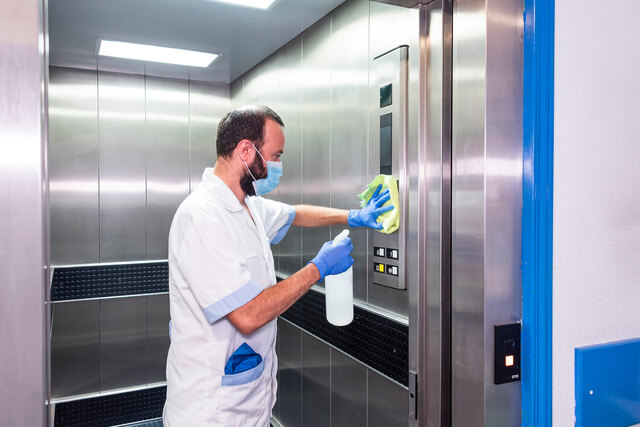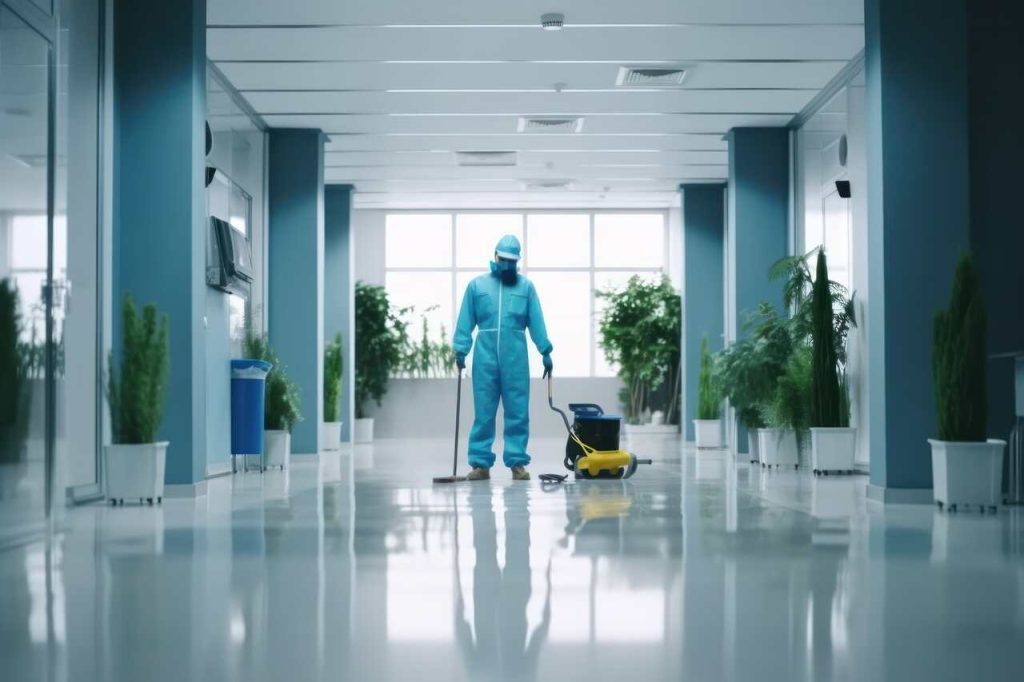Navigating an increasingly germ-conscious world is challenging, especially when you manage a high-traffic business. Your responsibility extends beyond offering services to ensuring a safe and sanitized environment for everyone who enters your premises.
High-traffic areas such as shopping malls, airports, and large offices are not just busy hubs but also breeding grounds for pathogens. Given today’s public health concerns, implementing rigorous disinfection practices is indispensable. Here’s a comprehensive guide to mastering this crucial aspect of facility management.
• Identify High-Touch Surfaces

Begin by pinpointing the surfaces and objects that receive the most human contact. Look beyond the obvious, such as door handles, elevator buttons, and reception counters. Don’t overlook vending machines, shopping carts, or even communal pens.
Cleaning professionals, like those from Fort Worth janitorial cleaning services, typically conduct thorough risk assessments. These assessments help determine not just what needs cleaning but also how often. Use this information to tailor your disinfection strategy, giving priority to high-touch surfaces.
Implement a tagging system or digital tracking for the cleaning team. This approach establishes accountability and streamlines the monitoring of the cleaning schedule.
• Choose The Right Disinfectants
In the realm of disinfectants, not all products are equally effective. Choose those approved by the Environmental Protection Agency (EPA) designed to kill a broad spectrum of pathogens. Look for specific certifications on the product label and ensure they align with your needs.
Proper application is crucial. Always follow the manufacturer’s guidelines regarding dwell time and surface compatibility. Shortcuts can undermine the efficacy of even the most potent disinfectant.
Also, consider material compatibility. A disinfectant ideal for glass might harm wooden countertops or degrade plastic finishes. Match each product to its appropriate surface to maintain the integrity of fixtures and furniture.
• Train Your Staff
Your staff serves as the front line in the battle against pathogens. Equip them with the necessary knowledge and tools. Conduct formal training sessions, develop straightforward instruction manuals, and post step-by-step cleaning charts in key locations.
In terms of Personal Protective Equipment (PPE), compromise isn’t an option. Ensure that every team member has access to gloves, masks, and, when necessary, eye protection. The use of PPE not only ensures their safety but also minimizes cross-contamination during cleaning.
Institute regular performance reviews. Employ methods like UV markers to gauge cleaning quality. These markers leave an invisible residue visible only under UV light, allowing you to assess how thoroughly surfaces have been cleaned.
• Frequency Is Key
In areas continually bustling with people, once-a-day cleaning is insufficient. Adjust the frequency of disinfection rounds according to foot traffic and activity levels.
To build trust, display signs indicating the last time an area was disinfected. This practice reassures customers and holds the cleaning team accountable.
Employ technology to make processes more efficient. Systems providing real-time cleaning alerts ensure no area is overlooked. Such tools eliminate guesswork, helping you adhere to a strict cleaning regimen.
• Don’t Forget Digital Surfaces
Digital touchpoints like self-checkout counters, information kiosks, and office printers are also germ magnets. Include these in your disinfection plan and clean them multiple times a day.
Choose cleaning agents compatible with electronic devices and always adhere to manufacturer guidelines when cleaning digital surfaces. This includes powering down the device before applying any cleaning solution.
Place hand sanitizing stations near these digital touchpoints. Encourage people to sanitize their hands before and after using these devices to minimize cross-contamination.
• Understand The Role Of Air Quality
Air quality plays a silent yet vital role in disinfection efforts. High-traffic areas frequently suffer from poor ventilation, contributing to the airborne spread of viruses. Investing in air purifiers with High-Efficiency Particulate Air (HEPA) filters can improve air quality.
Don’t underestimate the role of the Heating, Ventilation, and Air Conditioning (HVAC) system. Use high Minimum Efficiency Reporting Value (MERV) filters and replace them regularly. Also, schedule inspections for mold and bacterial accumulation, as these can pose additional health risks.
As a cost-effective supplement to mechanical air purification, consider opening windows and doors to allow fresh air circulation, weather, and security conditions permitting. Brief periods of increased natural airflow can make a substantial difference.
• Monitor, Adjust, Repeat
Continuous improvement is essential for a successful disinfection program. Utilize analytics to gauge the effectiveness of your strategies. Use customer feedback and pathogen test data to refine your approach.
Health guidelines are constantly evolving. Stay current with recommendations from authoritative bodies like the Centers for Disease Control and Prevention (CDC) and the World Health Organization (WHO.)
Integrate new guidelines into your protocols as they become available. Consider periodic third-party evaluations for an unbiased view of your disinfection practices’ effectiveness.
Conclusion
Effectively running a business today involves fostering a community of health-conscious individuals. Every detail is crucial, from pinpointing even the most inconspicuous high-touch areas to selecting potent disinfectants and rigorously training your staff.
With a relentless focus on continuous improvement, the rewards extend beyond profit to positively impact the well-being of everyone who walks through your doors.

